Firefox Lite
Firefox Lite is a lightweight, free, and open-source web browser specifically designed for users in Indonesia, India, and emerging markets.
*Achieved 5M installs, DAU:200K, MAU:1.5M, rating 4.3 on Google play
2017 Jul - 2019 Dec
Product 0-1 Creator/ Product UX Designer
The Challenge
Internet Users
Firefox had a strong user base in Europe and North America, but its presence in Asia remained limited. Given that Asia accounts for around 50% of the world's internet users, this presented a valuable opportunity for our team to expand into the region and better understand the specific needs of the Asian market.
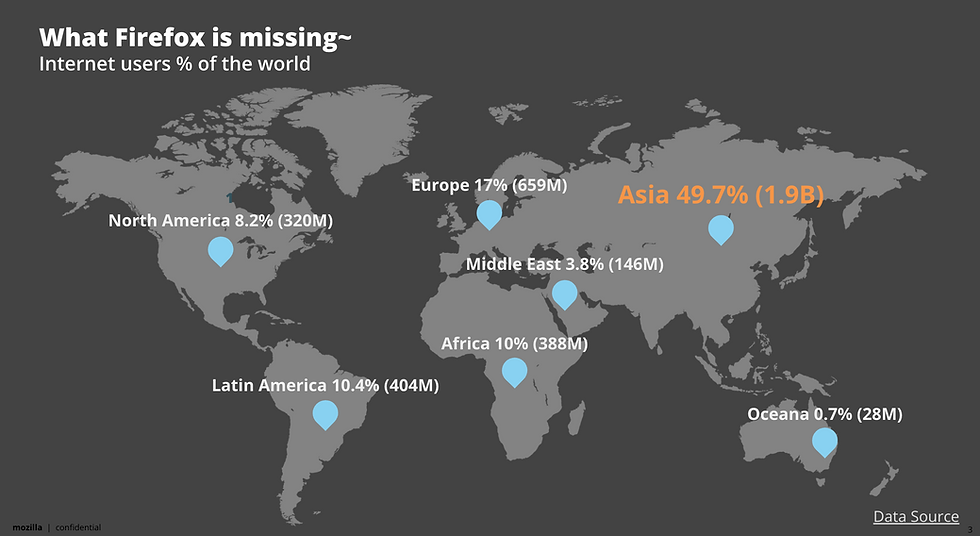
Why pick Indonesia?
Indonesia had the third-largest number of internet users in the world, with high mobile usage and a very strong and active Mozilla community. We observed that this market is not entirely dominated by Chrome — UC Browser also held a notable share. This indicated that if we could uncover the reasons behind this browser diversity, there may be a promising opportunity for us to carve out our own space. I’m going to share with you what we observed from this impressive country and how we’ve worked to tailor our browser specifically for Indonesian users.
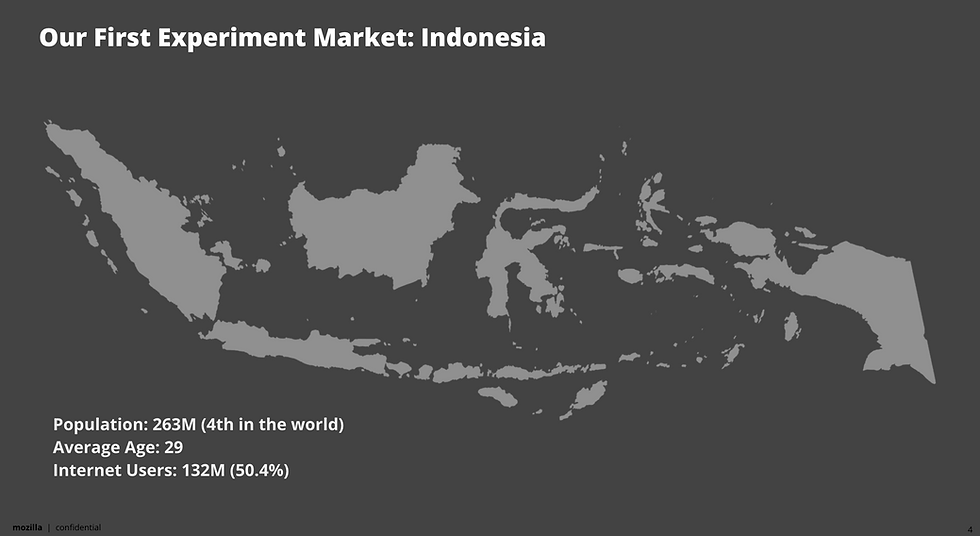
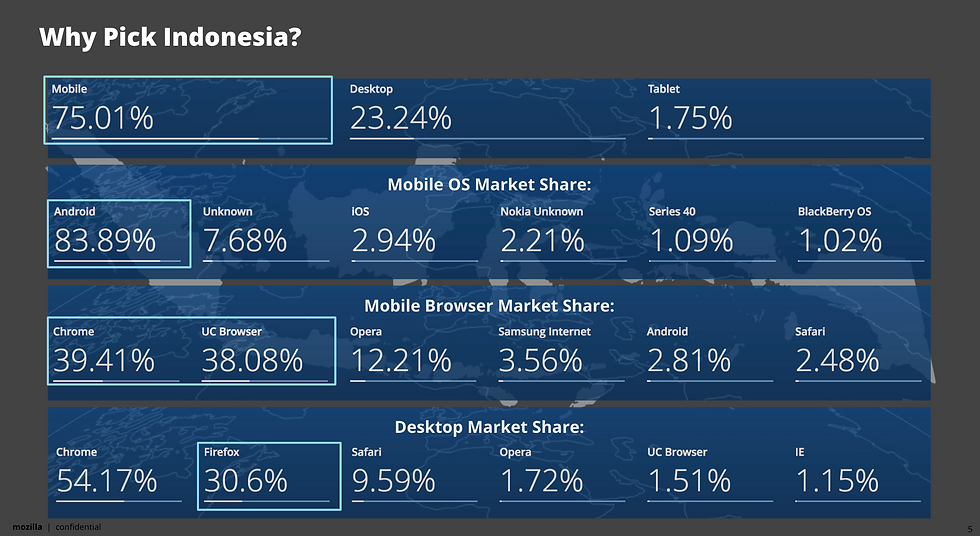
User Context
Competitor Analysis
The team and I researched the top four most-used browsers in the Indonesian market and compiled a list of the features they offer. This analysis helped our team gain deeper insights into the competitive landscape and better understand the specific needs of the market.
Why are UC Browser & Opera Mini popular in Indonesia?
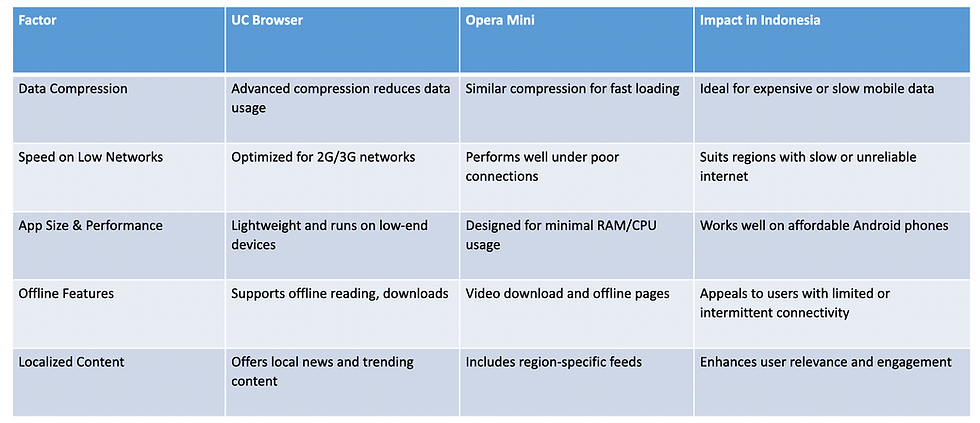
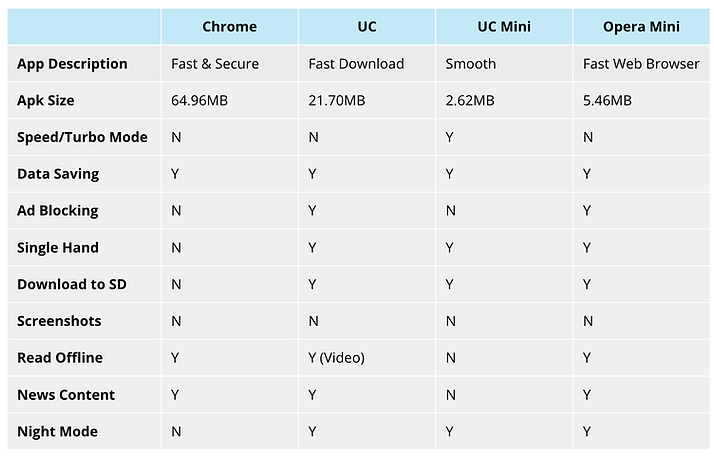
User Survey
Together with the researcher and PM, we listed the features of competitor products as well as the features we envisioned. Through a survey, we gained a preliminary understanding of user needs, which also helped us prepare for our user interviews in Indonesia to uncover the deeper reasons behind those feature needs.
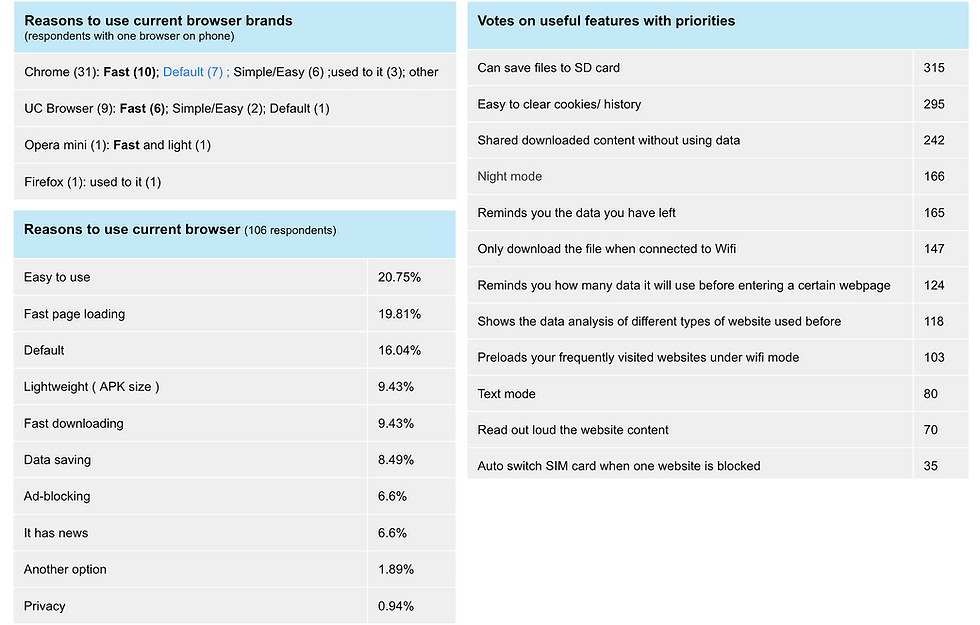
Field Research
I participated in a field study with the researcher to better understand user needs and browser usage behaviors, and interviewed users to understand the "why" behind their feature requests.
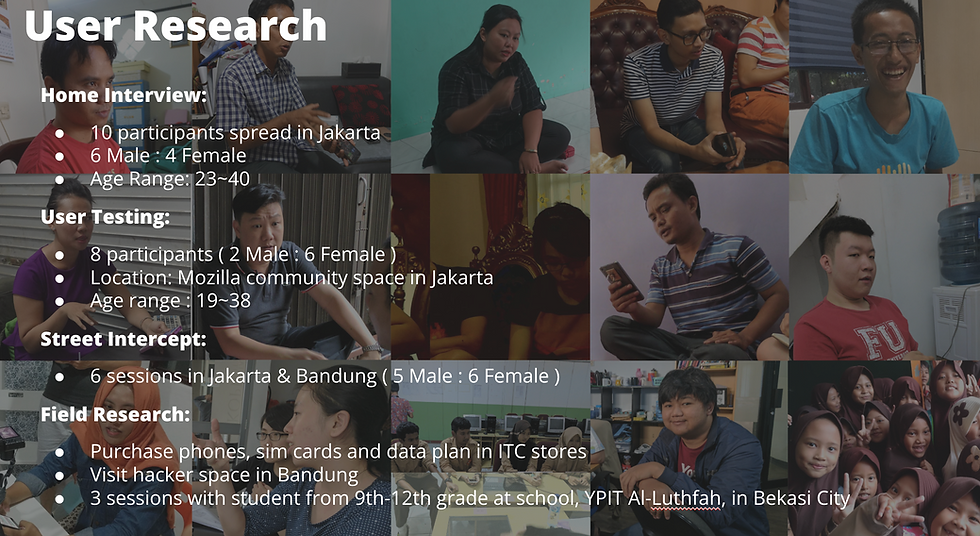


Concept
Brainstorming
The product team used an Affinity Diagram to conduct the first round of product ideation based on the research insights.
I also invited my colleagues interested in brainstorming to collaborate using methods like How Might We and Crazy Eights to generate more possible solutions addressing issues such as small app size, ease of use, and efficient data and storage savings...etc.,
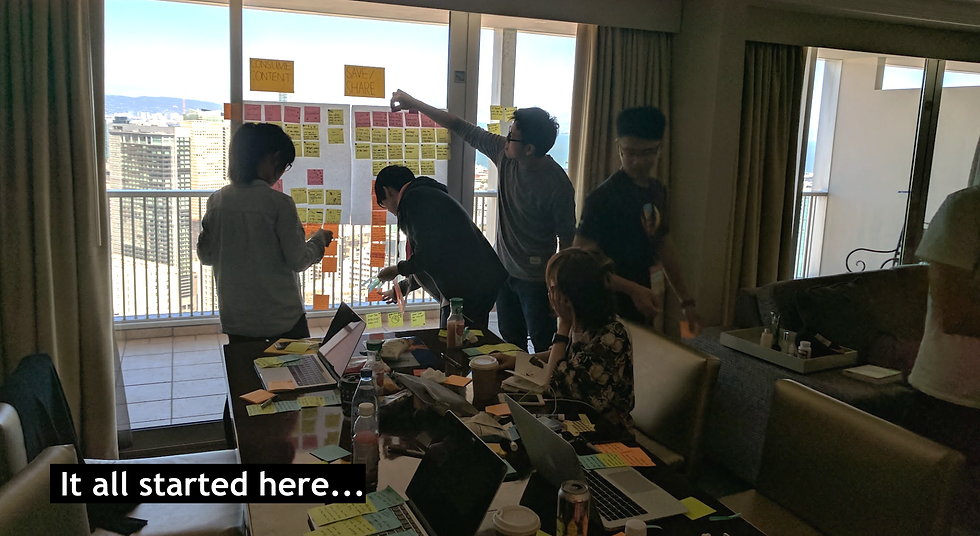
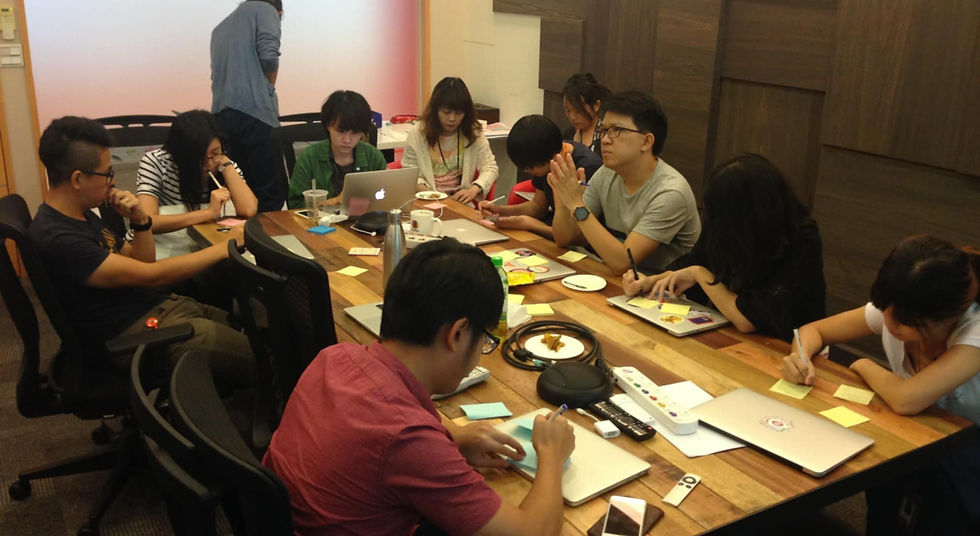

Vote
We ran a poll to find the most valuable ones. These will guide our next discussions with the PM and engineering team.

Prototype
Prototype for User Testing
I then collaborated with the PM and engineering team to discuss feasible features that could be delivered within three months. I created a conceptual browser and flow based on feasible features, then ran a design critique with the design team for feedback. Here's the first version of the prototype I worked on with the UI designer.
*During previous field research, I observed that many Indonesian users found it challenging to use their default browsers, as many buttons and actions were placed at the top of the screen. This layout made it difficult to access key functions—especially for users with smaller hands or shorter fingers. To address this, I designed the interface with all key buttons placed at the bottom of the screen, making it easier for users to operate the app comfortably with one hand.
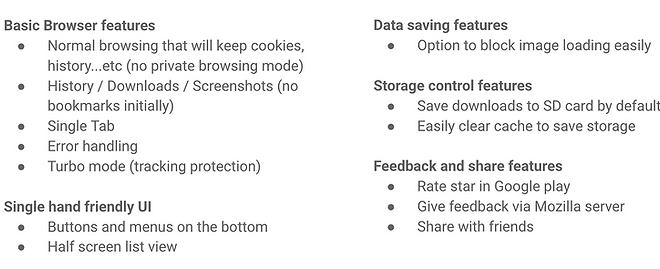

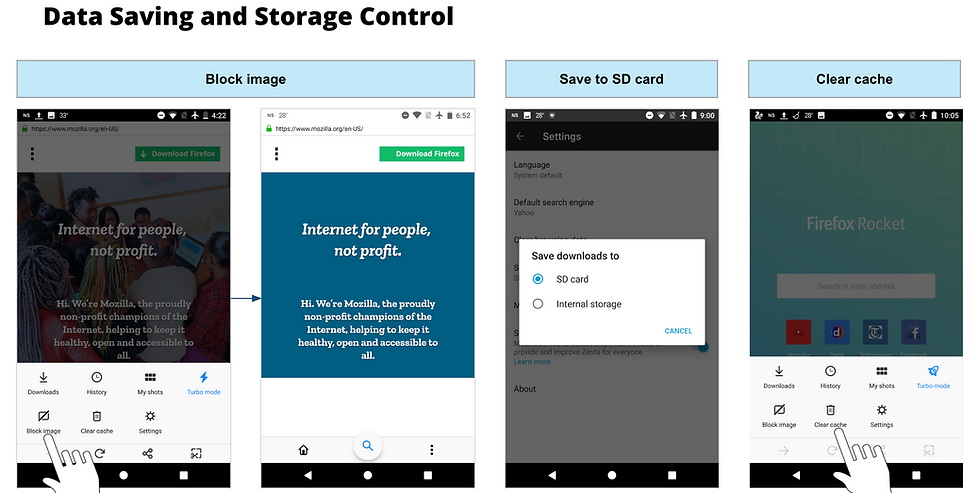


User Testing
Testing
With this prototype in hand, I collaborated with the researcher to define the test items and conducted usability testing with 9 participants to understand their product usage issues.
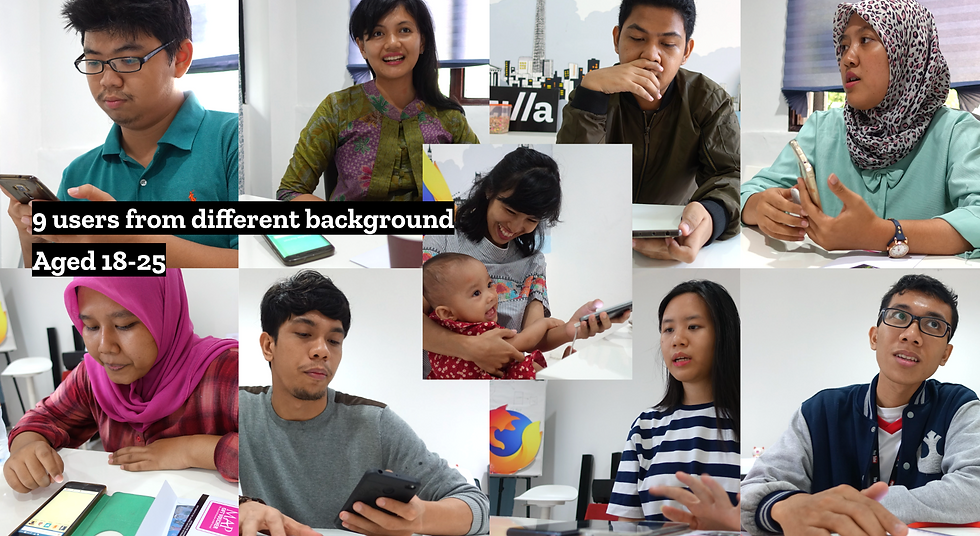
Validation & Design Insights from the Testing
1. Browsing with One Hand is Quiet Helpful
Through user testing, I found that participants found it helpful to have their browsing history on the homepage and to be able to operate the app with one hand, especially during commuting or in situations like the mother in the photo, holding a child in one arm while using the phone with the other.
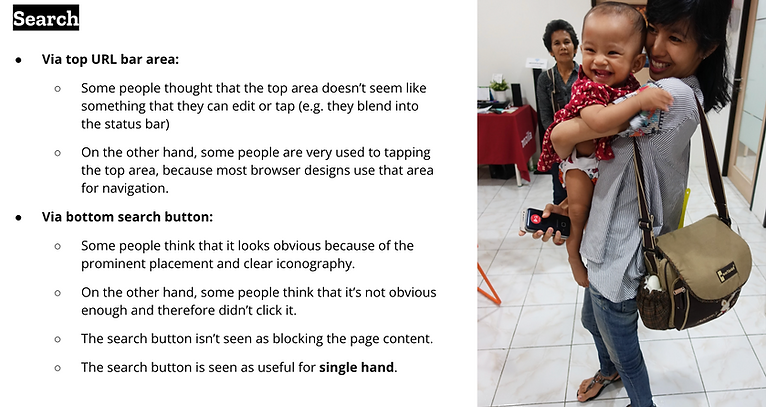
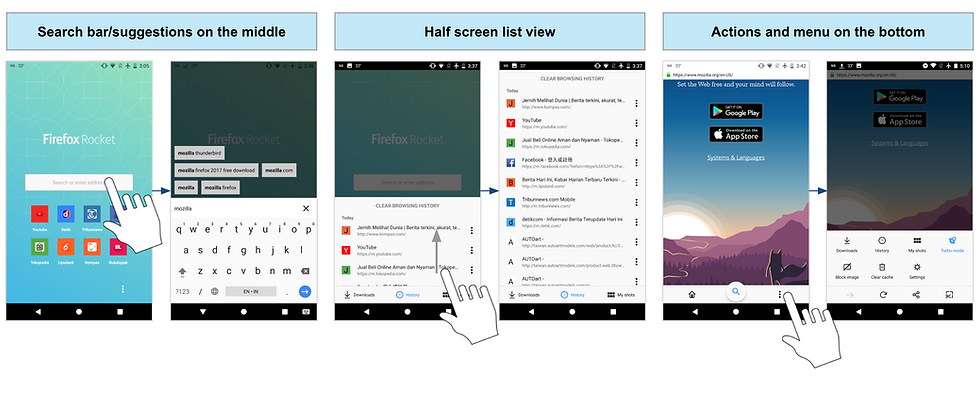
2. Full-screen Screenshots to Save Mobile Data
Based on this observation, we found that people often take screenshots to read content like shopping items or news without using mobile data.
This insight led me to propose one of Firefox Lite’s key selling features — the full-screen screenshot.
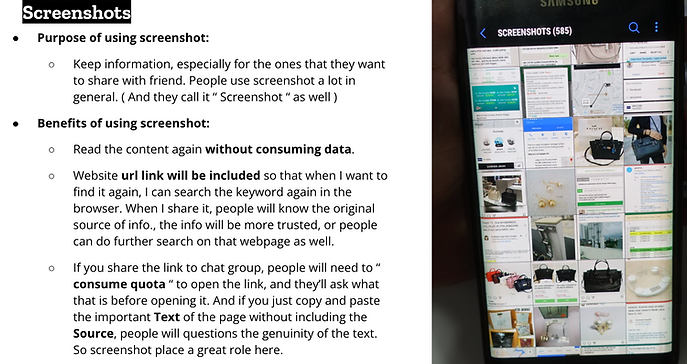

Product
Tailored Design
Based on valuable insights and feedback from the user interviews and testing, I defined design principles and strengthened the product’s features with UI designer, improved the overall experience, and refined the final presentation. What follows is our deep dive into Indonesian culture and lifestyle, which guided the thoughtful, tailored design created specifically for local users. The result was the successful launch of Firefox Lite.
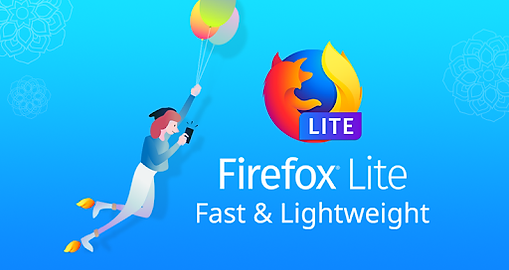.png)
1. Pattern Design & Color
Batik is a traditional craft. Indonesians wear batik as a prized fashion apparel for either formal or casual occasions, not only dignified but also beautiful and versatile.” This is an important reference and leads us to add “patterns” into our design.
For the color scheme, blue feels fast, light purple feels informative, green feels lively, and orange feels fun. That's why we chose blue as the primary color of the product—to convey a sense of speed and efficiency.


2. Cultural Awareness in Product Design
Around 90% of Indonesians identified themselves as Muslim. However, the religion of Islam does not allow its people to eat pork.
“Using piggy banks is inappropriate for Indonesians.”
This experience taught me that when doing design, we should consider different cultures.
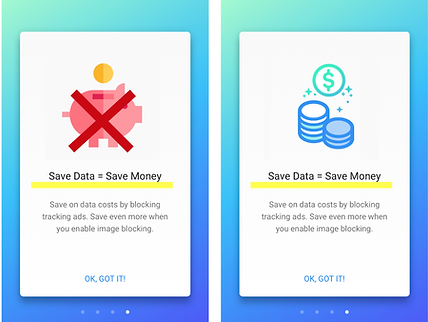
3. Night Mode for Reading
The entire webpage can be captured for offline reading with a single tap on the toolbar. The corresponding website link is also saved automatically, allowing for quick and convenient access at a later time.
In addition, as lighting in many Indonesian households tends to be dim to conserve electricity, night mode is available to reduce eye strain in low-light environments while also helping to save battery life.
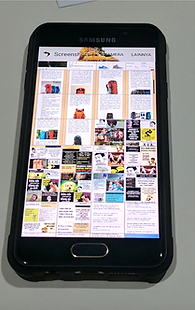
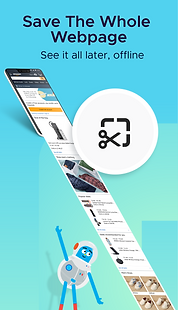
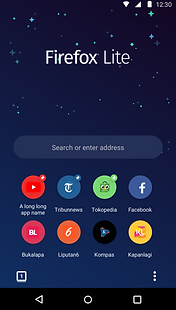
Achievement
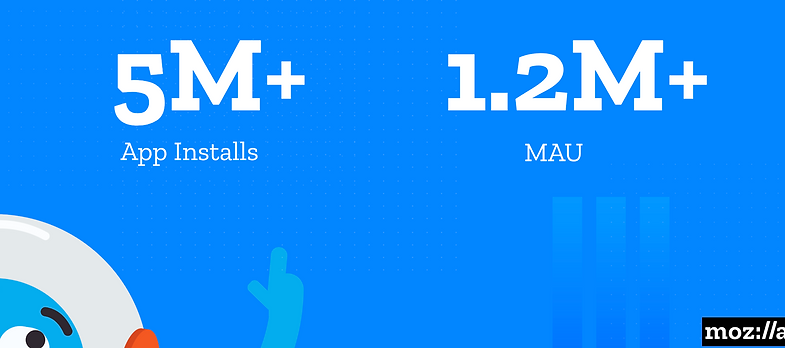
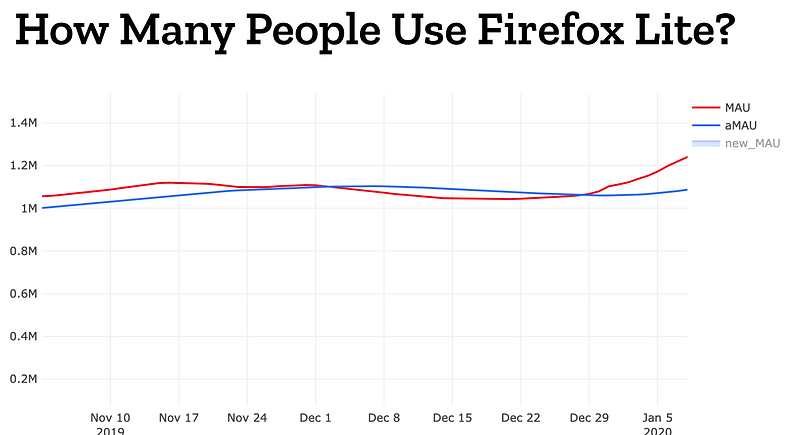

Exciting User Feedback
We received many touching and encouraging piece of feedback from the Google Play Store. Below is one example:
“Oh man, what a browser. It’s the first browser I have ever seen that can be used with just one hand.”
This comment reaffirmed that we were on the right track — building something truly helpful and meaningful for our users.
Design Sharing
I also took the opportunity to share my product design experience on the Medium platform.
Data Analysis
Indian Market
After launching in the Indonesian market, we simultaneously initiated expansion into other Southeast Asian countries to reach a broader user base. Our data analysis revealed a growing trend in India’s user base, sparking our team’s curiosity about this market. Consequently, alongside the researchers, we conducted interviews and carried out in-depth research in India.

User Context
User Survey
Together with the researcher and PM, we conducted surveys in the Indian market to gain preliminary insights into why users prefer Firefox Lite.
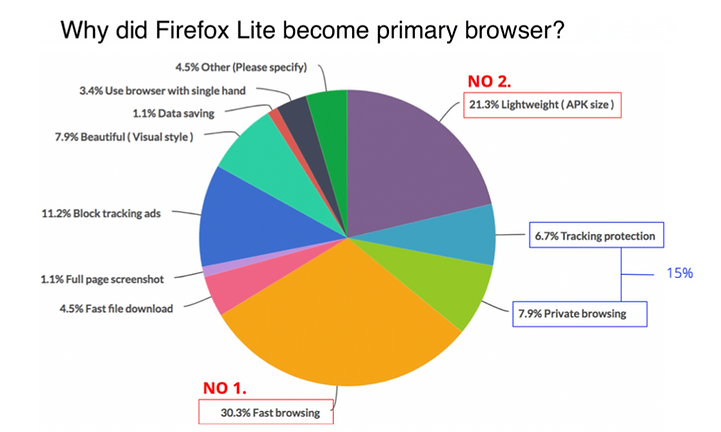
Field Research
I participated in user interviews conducted by the researcher with 7 Indian participants and gained insights into why they use private mode and are concerned about online tracking.

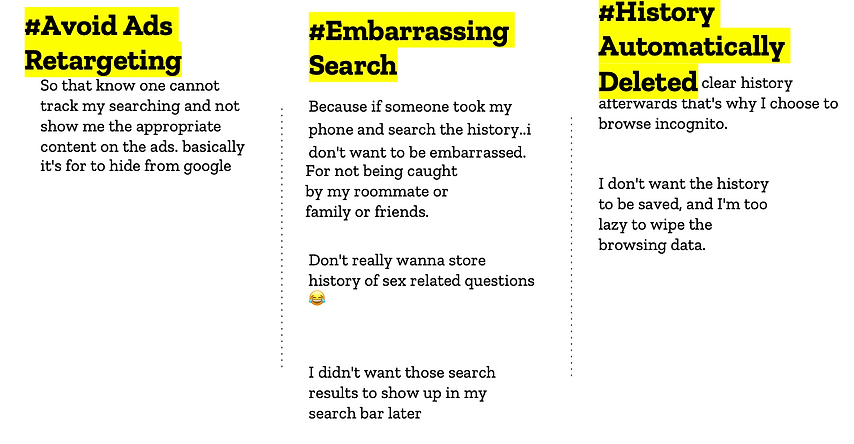
Significant Growth in User Base and Retention
Tailored Design
Based on valuable insights from user interviews, I added a clearly visible "Tracking Blocked" toggle to Privacy Mode, along with a shortcut to enter Private Mode more easily. Since introducing this feature, the data shows that our 7-day retention rate reached 99%. That means we’ve done something exciting and right—again!
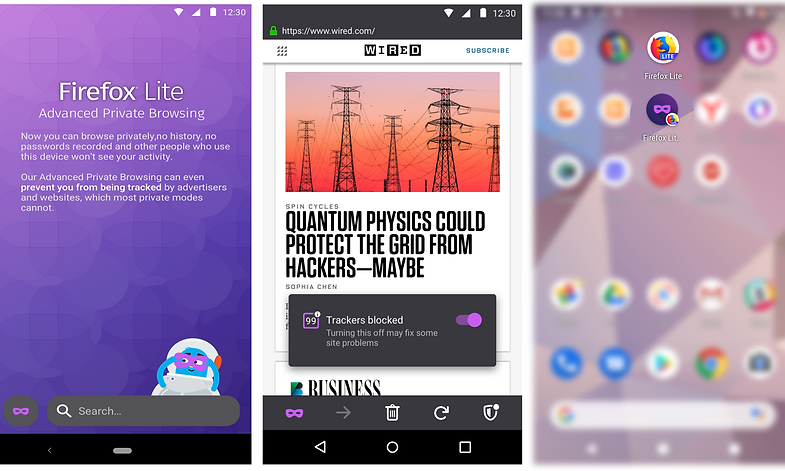
Ending
This was a Great User-Centered Design Journey
Although Firefox Lite has been discontinued, the experience of working with the team to explore user needs and design the product from 0 to 1 taught me so much.
Appendix
I was deeply involved in many of the content design initiatives.
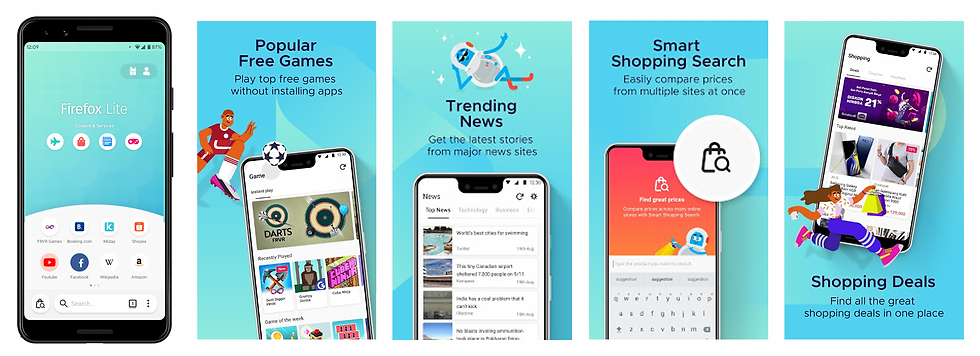
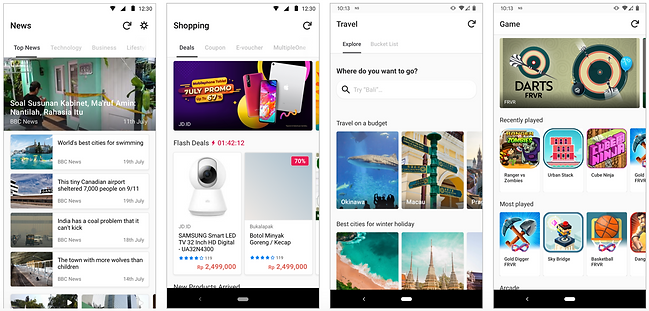
Cooperated with Bukalapak, Newspoint, Dailyhunt, ExpressVPN, Instabridge, AccuWeather, and 17 Live to experiment on different business models.
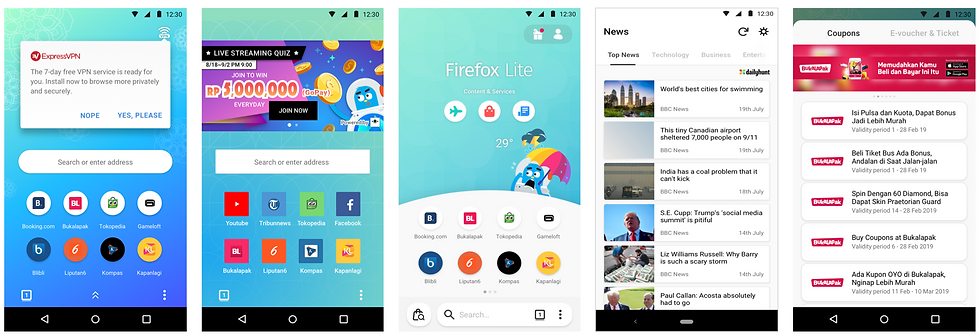
This was the innovation process we followed.
